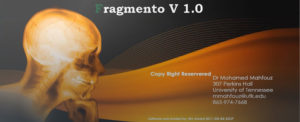← Back to Just Science Podcast Original Release Date: April 23, 2018 In episode one we kick off our 2018 Drugs Season. Topics will range from legalization of marijuana in relation to police officers, the opioid epidemic, Electronic Dance Music…
Category: Discipline (page 65)
Webinar: Transition to Impact – Bringing Research to Practice [ARCHIVAL]
Overview Enabling great research to have impact in the forensics community requires transitioning knowledge from the lab to the market. Come learn about the steps you can take to improve the likelihood of your research impacting practice. Technology and knowledge…
Success Story: Establishing a “Microbial Clock” to Improve Time of Death Prediction
National Institute of Justice and Multi-Institute Academic Team Date April 2018 Overview The postmortem interval (PMI) is the time that has elapsed since a person’s death. Determining the PMI at a crime scene may help to recreate the victim’s timeline…
Just Talking Testimony
← Back to Just Science Podcast Original Release Date: April 9, 2018 In this special episode ten of our 2018 IPTES Season, recorded live in Crystal City, Just Science covers the panel titled, “Statistics and Testimony from the Practitioner and…
Computerized Reconstruction of Fragmentary Skeletal Remains
Overview In this webinar, we will introduce a newly developed software tool called “Fragmento”. Viewers will be able to learn how to use Fragmento to sort and assemble skeletal fragmentary remains and reconstruct the full bone and biological profile. In…
Success Story: Maximizing the Use of Mitochondrial DNA in Identifying Remains and Aiding Missing Persons Casework
National Institute of Justice and the American Registry of Pathology Date April 2018 Overview Mitochondrial DNA (mtDNA) serves as an important tool in situations where traditional nuclear DNA analysis is unlikely to yield probative information. mtDNA sequencing has traditionally focused…
Forensic Wood Identification
Date April 2018 Overview Trace evidence represents any small-scale material that could be changed or transferred from a person, object, or environment during the commission of a crime; wood examination is one specialty area of this forensic discipline. The purpose…
Applied Polarized Light Microscopy for Trace Evidence Examiners
Date April 2018 Overview Polarized light microscopy (PLM) is a technique commonly used in the field of forensic science. PLM characterizes and identifies trace evidence found at crime scenes, such as fibers, hairs, paints, and glass fragments. This workshop introduced…
Statistical Interpretation Software for Friction Ridge Skin Impressions (FRStat)
Date April 2018 Overview The Defense Forensic Science Center (DFSC) developed FRStat in response to criticisms from legal and scientific commentators on the lack of an empirically demonstrable basis to substantiate conclusions in pattern evidence. This tool is intended to…
Just Bayesian Brawl
← Back to Just Science Podcast Original Release Date: April 2, 2018 In episode nine of our 2018 IPTES Season, Just Science is covering the Statistical Approaches to Forensic Interpretation panel, recorded live at IPTES. Moderators for the panel was…






